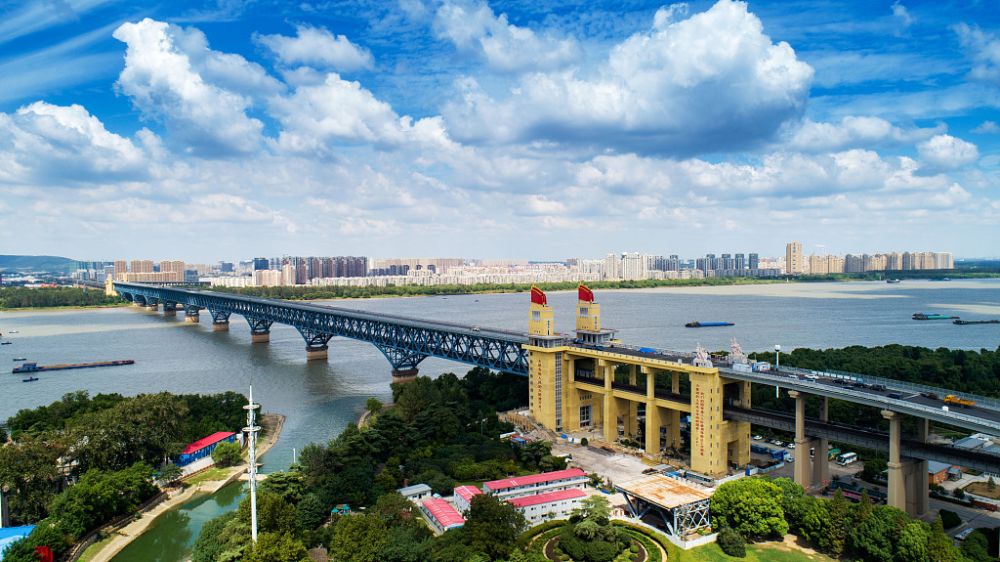

The Nanjing Yangtze River Bridge, located in the historic city of Nanjing, has been a focal point of Chinese pride and a significant beacon in the history of China's infrastructure development. Opened to the public on December 29, 1968, it was the first bridge to be built without foreign assistance, representing a major achievement of the Chinese people during a period of self-reliance and resilience.
Tourism at the Nanjing Yangtze River Bridge began shortly after its opening, as it was not only a critical transportation artery but also a symbol of Chinese ingenuity and nationalism. Initially, it drew crowds of domestic tourists, engineers, and political figures who were intrigued by its design and significance. Over the years, as China's doors opened wider to international visitors, the bridge also became an attraction for foreign tourists interested in modern Chinese history and monumental architecture.
The bridge, extending over the Yangtze River, not only provides a strategic connection between the northern and southern regions of China but also stands as a historical monument. It comprises two levels: an upper deck for vehicles and a lower deck for trains, showcasing the dual function of transport it serves. With its 9,000+ workers and innovative design for that era, the development of the bridge marked a critical moment in China's journey towards industrial and technological independence. Monuments, sculptures, and slogans from the period decorate the bridge area, divulging its storied past.
In recent years, the bridge has undergone a series of renovations to ensure safety and to enhance its appeal as a tourist destination. The refurbishment also aimed to cater to the increasing interest in industrial tourism and heritage sites. Visitors nowadays can enjoy an elevator ride up to the bridge towers to witness a panoramic view of Nanjing and the vast expanse of the Yangtze River.
The current tourism trend gravitates towards experiential and educational visits. Tourists are keen to learn about the bridge's history, its construction process, and the socio-economic impact it has had on China. Moreover, the bridge is often viewed at night when it is illuminated by lights, creating a spectacular visual experience.
Special events and exhibitions are occasionally organized on the bridge's grounds, allowing visitors to partake in its commemorative culture. These include photo exhibitions, thematic walks, and educational programs that narrate the bridge's contribution to China's modernization.
Efforts to preserve the bridge's integrity and historical importance continue, with both the government and cultural organizations working to ensure its legacy is passed down. Educational programs specifically target younger generations to instill an understanding of their nation's achievements.
The Nanjing Yangtze River Bridge remains a testimony to China's collective spirit and technological advancement. As a tourist destination, it offers a unique blend of historical significance, architectural prowess, and scenic beauty, inviting visitors from around the globe to witness a landmark that has shaped the course of a nation's history.